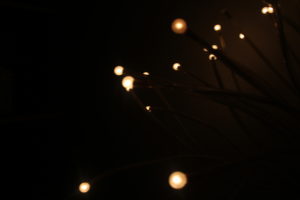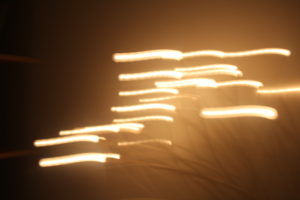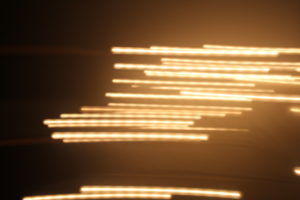shutter speed is the nominal time for which a shutter is open at a given setting.
In film photography it was the length of time that the film was exposed to the scene you’re photographing and similarly in digital photography shutter speed is the length of time that your image sensor ‘sees’ the scene you’re attempting to capture.
Shutter speed is measured in seconds – or in most cases fractions of seconds. The bigger the denominator the faster the speed (ie 1/1000 is much faster than 1/30).
in most cases you’ll probably be using shutter speeds of 1/60th of a second or faster. This is because anything slower than this is very difficult to use without getting camera shake. Camera shake is when your camera is moving while the shutter is open and results in blur in your photos.
If you’re using a slow shutter speed (anything slower than 1/60) you will need to either use a tripod or some some type of image stabilization (more and more cameras are coming with this built in).
To freeze movement in an image (like in the shots of the birds above and the surfer below) you’ll want to choose a faster shutter speed and to let the movement blur you’ll want to choose a slower shutter speed. The actual speeds you should choose will vary depending upon the speed of the subject in your shot and how much you want it to be blurred.
In the subway shot below the shutter speed was 1 second so the movement of the trains on either side of the subject is beautifully blurred.
in the following seascape the shutter speed was 1/3 of a second and so we sea the movement in the water.
Remember that thinking about Shutter Speed in isolation from the other two elements of the exposure triangle (aperture and ISO) is not really a good idea. As you change shutter speed you’ll need to change one or both of the other elements to compensate for it.
For example if you speed up your shutter speed one stop (for example from 1/125th to 1/250th) you’re effectively letting half as much light into your camera. To compensate for this you’ll probably need to increase your aperture one stop (for example from f16 to f11). The other alternative would be to choose a faster ISO rating (you might want to move from ISO 100 to ISO 400 for example).
experimenting wit shutter speed

this photograph above of a home decoration lamp with multiple small filaments on the top scattered around was taken with a semi fast shutter speed.

this is the same photograph but this time it was taken with a slow shutter speed and the camera was slowly moved to the left while the photo was being taken

this photo was also taken on the same shutter speed but the camera was moved faster to the left
so we conclude that if you want to take a sharp image with nothing blurry like a sports photograph or a photograph of a moving animal or human we have to you a fast shutter speed , but if we are taking an abstract photo and want to create movement and color to the photograph we use a slow shutter speed.



Talal…you seem to only have 1 x completed homework. The photo-assignments embedded in the h/w is a vital part of your coursework.